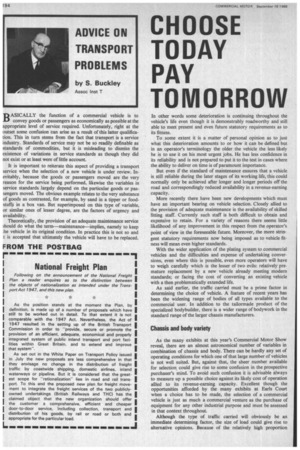National Freight Plan
Page 192

If you've noticed an error in this article please click here to report it so we can fix it.
Following on the announcement of the National Freight Plan a reader enquires as to the distinction between the objects of nationalization as intended under the Transport Act 1947, and this new plan.
As the position stands at the moment the Plan, by definition, is made up of a number of proposals which have still to be worked out in detail. To that extent it is not comparable with the 1947 Act. Nevertheless, the Act of 1947 resulted in the setting up of the British Transport Commission in order to "provide, secure or promote the provision of an efficient, adequate, economical and properly integrated system of public inland transport and port facilities within Great Britain, and to extend and improve that system-.
As set out in the White Paper on Transport Policy issued in July the new proposals are less comprehensive in that they envisage no change in the distribution of freight traffic by coastwide shipping, domestic airlines, inland waterways or pipeline. But it is considered that the greatest scope for "rationalization" lies in road and rail transport. To this end the proposed new plan for freight movement to integrate the freight services of the two publiclyowned undertakings (British Railways and THC) has the claimed object that the new organization should offer the customer a comprehensive, efficient and cheaper door-to-door service, Including collection, transport and distribution of his goods, by rail or road or both and appropriate for the particular load.




















































































































































































































































































